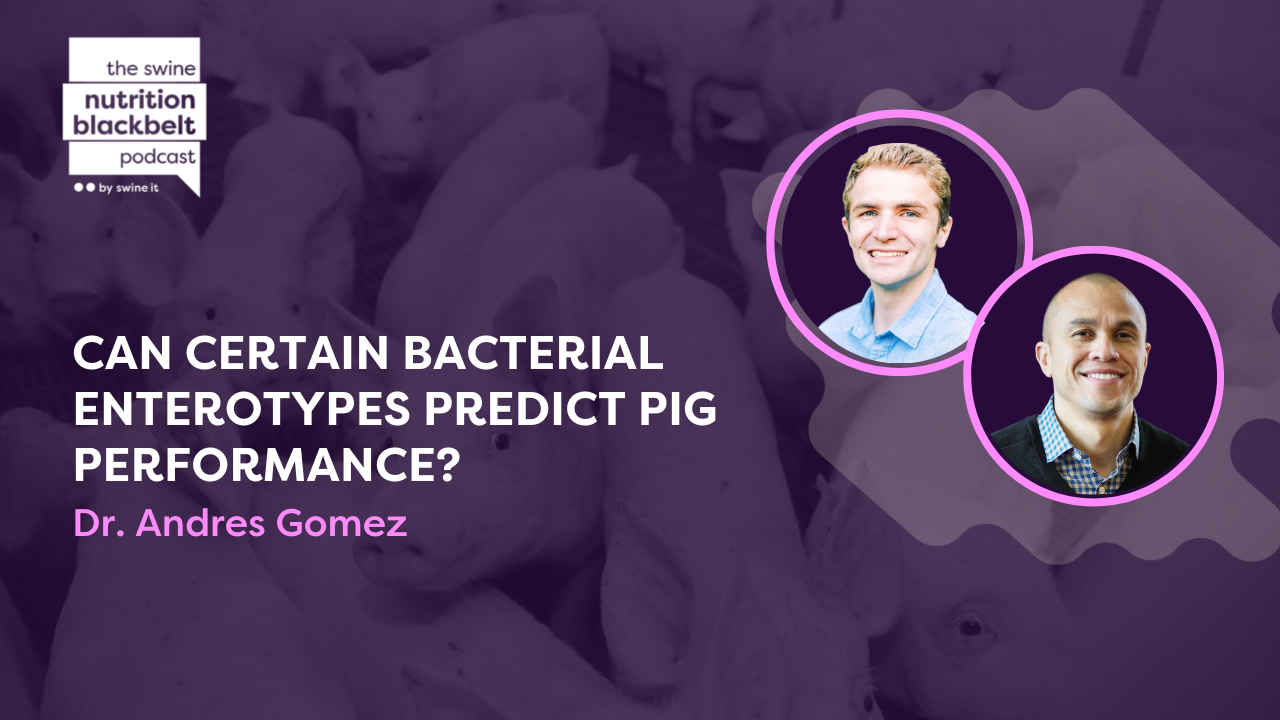We know that the microbiome can have an effect on a pig’s performance, and that it can be manipulated. However, can we predict a pig’s performance based on their microbiome classification, ie. their enterotype? In today’s episode, I talk with Dr. Andres Gomez about his work trying to answer that question and determine if a pig’s enterotype can affect the efficacy of some feed additives.
Meet the guest:
Dr. Andres Gomez is a microbial ecology professor at the University of Minnesota. He...
Given the growth rate of pigs, meeting nutritional needs for bone development and density are important for the proper growth and development of the animal until it reaches market weight. But in order to determine those requirements, we need to observe the animal’s bodily response to different dietary levels, and that requires a set of standard measurements and reference values. In this episode, I talk with Bo Williams about his study of feeding different levels of phosphorus, Vitamin D, and phy...
Fiber is very commonly used in gestating sow diets for a variety of reasons. One such reason is that sows are capable of utilizing more energy from the fiber as they have increased hindgut fermentation capacity; can it have other effects that we haven’t considered? In today’s episode, I talk with Garrin Shipman about his study feeding different levels of dietary fiber to gestating sows with different carbohydrase mixture concentrations to see how it affects amino acid digestibility and the total...
In the US, the two main ingredients used to meet the protein requirement of pigs are soybean meal and synthetic amino acids. For the most part, whether to rely on one or the other depends on how the market is behaving – but do pigs respond differently to each method? In this episode, I talk with Dr. Henrique Cemin about a study he performed that tested two diets with different soybean meal inclusion rates for grow-finish pigs in order to better clarify this issue.
Meet the guest: Dr. Henri...
Preferred selection criteria have changed drastically over the last several decades. When it comes to that matter, increasing growth rate is typically high on the priority list – but should you select for increased gain in the nursery or in the finishing period? In this episode, I talk with Madie Wensley about her study that evaluated 2 different sire lines – one selected for early maturing pigs and another, for late maturing pigs – to see how their growth rates and stress levels differed from b...
Increasing pig growth performance is a topic that I am sure you are all familiar with. It has direct economically applicable results and can increase the health of the herd at the same time. In this episode, I talk with AJ Warner about a study he performed feeding Tri-basic copper chloride in conjunction with an ionophore to grow-finish pigs and evaluating their affects on growth performance throughout the finishing period.
Meet the guest:
Alan (AJ) Warner is a Research Manager at New Fas...
Pelleting swine feed increases its temperature, which has made people worry about causing the Maillard reaction and thus, making the amino acids less digestible. Several studies in the past have evaluated the pelleting process and shown that this reaction is not likely to occur, but what if more reducing sugars were added? In this episode, I talk to Dr. Kara Dunmire about her search for an answer to that question by testing the availability of amino acids in swine diets with high levels of reduc...









